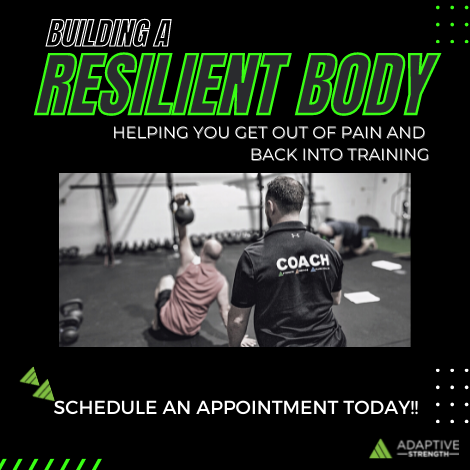Throughout our lives, we are going to encounter pain and injuries from time to time. I get it injuries are terrible and they can really throw people off their training. That being said, just because we have some pain, doesn’t mean we should stop training. Ideally, we can troubleshoot these injuries and learn how to train smarter when these issues pop up.
The bench press is a common one we see that is a source of frustration for folks with shoulder pain.
Here’s the problem, if we keep blowing through the pain with our training 1 of 2 things can happen:
- The pain eventually goes away
- The pain stays the same and or gets worse over time
It’s a roll of the dice really. Maybe it goes well, maybe it doesn’t however if we’re really serious about our long-term performance and health we shouldn’t be gambling without shoulder injuries.
For this reason, it’s important to learn how to modify our training so that we can continue working towards our training goals but also ensure our pain improves over the course of time. What’s awesome is that exercise helps to heal injuries however it’s important to understand that we need to “dose” exercise appropriately to push our injuries in the right direction.
Think of the difference between taking 2 aspirin to get rid of a headache and taking the whole bottle. The whole bottle can kill you but 2 aspirin works great. The same goes for exercise. Imagine having a shoulder injury and bench pressing to 90% of your 1 rep max to failure. This is kind of like taking the entire bottle of aspirin. If you have an injury we have to find the right dosage to help you heal.
To help you find the right dosage follow these principles below to figure out what the right dosage of exercise is right for you so start feeling stronger and less painful in the gym.
How to decrease shoulder pain during the bench press:
Option 1: Decrease total load or slow down the speed of movement- less total load decreases stress on the shoulder
- a nice way to do this is to simply increase the repetitions performed in a set as then it will decrease the total load on the bar you’re able to lift during the bench press. Think 12 lighter reps vs 5 heavy reps
- Slow down the speed of the lift or add “pauses” in the bottom of the bench press- tempo or paused lifts will decrease the total amount of weight on the bar potentially allowing you to find that right dose of bench press
Option 2: Press less frequently throughout the course of the week for fewer reps- often decreasing total volume will be enough to get out of shoulder pain
- reduce total sets of bench press in a given session
- Substitute 1-2 pressing exercises for rowing exercises within your program
Option 3: Vary the pressing exercise- Changing the angle, grip or tool is often enough to get out of pain while pressing
- try changing to an incline or decline press
- try changing grip width or switching to a neutral grip bar
- try using kettlebells or dumbbells
Option 4: Narrow the grip and limit the range of motion- A more narrow grip and less depth will decrease stress to the AC joint
- Try switching to a close grip
- try floor press
Option 5: Try some crawl variations as a modification- Crawl variations are usually well-tolerated for painful shoulders and work similar muscle groups (pecs, delts, triceps)
- bear crawls, sideways crawls and inchworms fit the bill here
Option 6: Substitute pressing for rowing- If all else fails then try substituting a pressing variation for a rowing variation
- Batwings, single arm kettlebell row etc
So there are some ideas and a simple plan for bench press training with shoulder pain. If you currently have an injury or end up having pain, the smartest first step is to go get the injury evaluated by a professional. The information in this article is not intended to replace guidance from a qualified professional.
That being said, just because we have some pain, doesn’t mean we should stop training. Ideally, we can troubleshoot these injuries and learn how to train smarter when these issues pop up





